Time to celebrate
Exploring the significance of various festivals, through stories, images and creative activities; learning about the customs and meanings behind these celebrations.
The Curriculum and Assessment Review final report has been released. We’re reviewing the recommendations and planning for future updates. Learn more
- Subjects >
- Religion and worldviews >
- Reception >
- Reception >
-
Time to celebrate
Across the year
These six standalone lessons should be taught during each half-term. The timing is flexible but they should be planned to coincide with when religious and cultural festivals are celebrated.
Note – Lesson 3: What is Holi? requires the children to bring in plain white t-shirts (optional).
Unit outcomes
Development matters
Understanding the world
Recognise that people have different beliefs and celebrate special times in different ways.
Talk about members of their immediate family and community.
See Development Matters (non-statutory curriculum guidance).
Understanding the world
ELG: Past and present
Talk about the lives of the people around them and their roles in society.
People, culture and communities
Know some similarities and differences between different religious and cultural communities in this country, drawing on their experiences and what has been read in class.
See Statutory framework for the early years foundation stage, 2021.
Suggested prior learning
What makes us special?
Get startedLessons
Lesson 1: What is the Harvest Festival?
Lesson 2: What is Hanukkah?
Lesson 3: What is Holi?
Lesson 4: What is Shrove Tuesday?
Lesson 5: What is Ramadan?
- To explore how some Muslim people celebrate Ramadan.
Lesson 6: How do some Hindu people celebrate Ganesha Chaturthi?
Key skills
Key knowledge
Related content
Unit resources
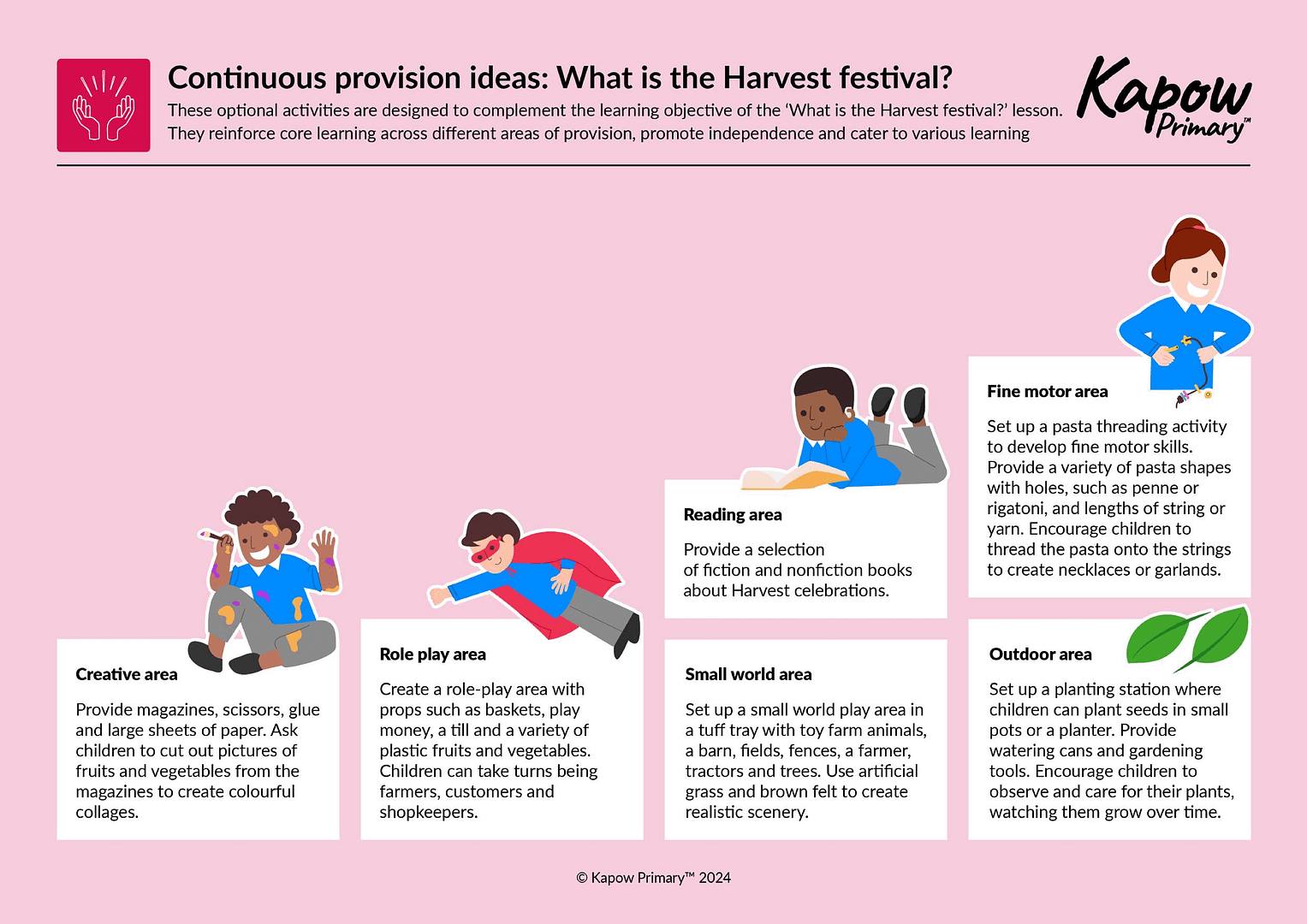
Continuous provision ideas – R&W EYFS: What is the Harvest festival?
Continuous provision activities to complement the EYFS lesson 'What is the Harvest Festival?'
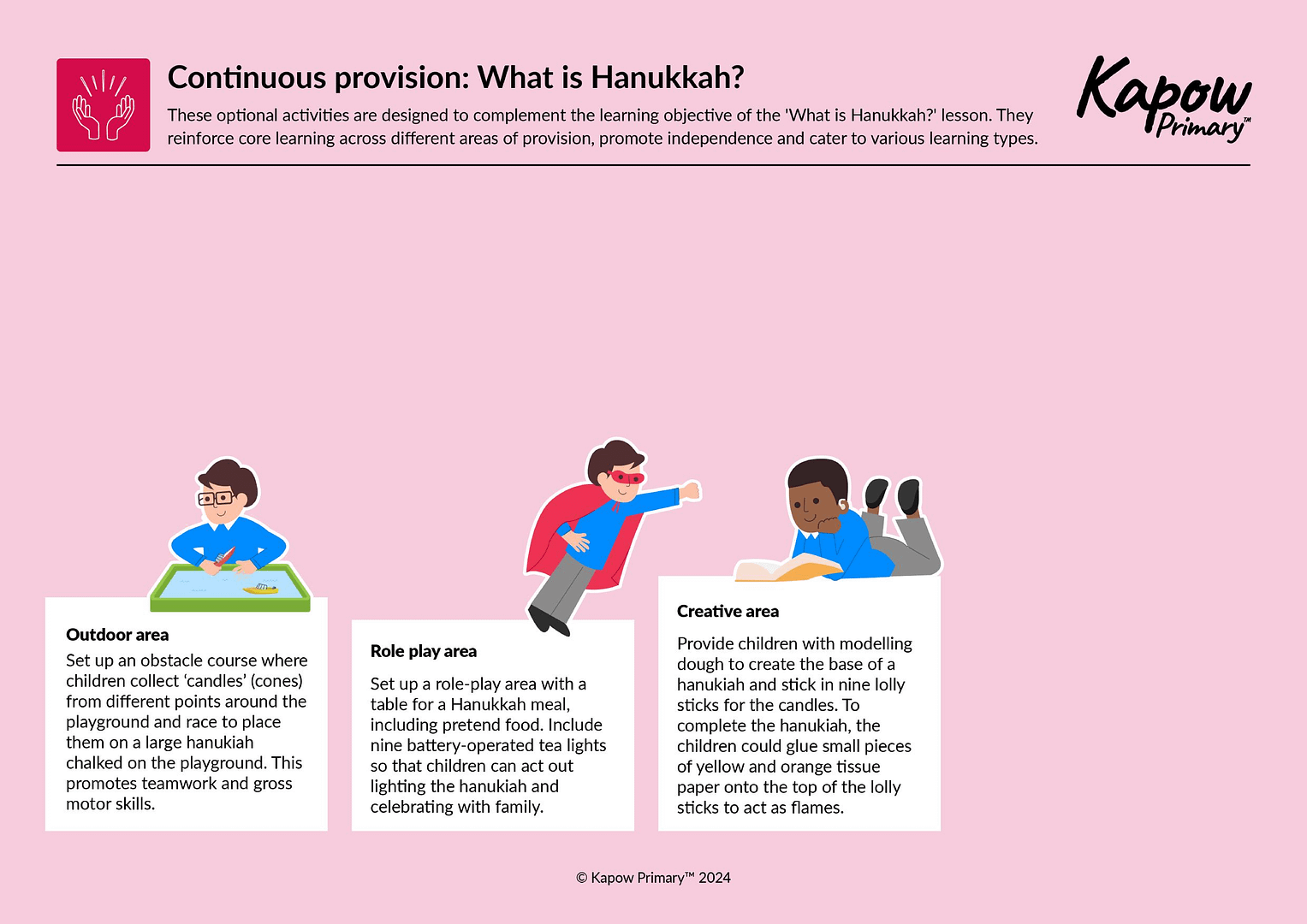
Continuous provision ideas – R&W EYFS: What is Hanukkah?
Continuous provision activities to complement the EYFS lesson 'What is Hanukkah?'
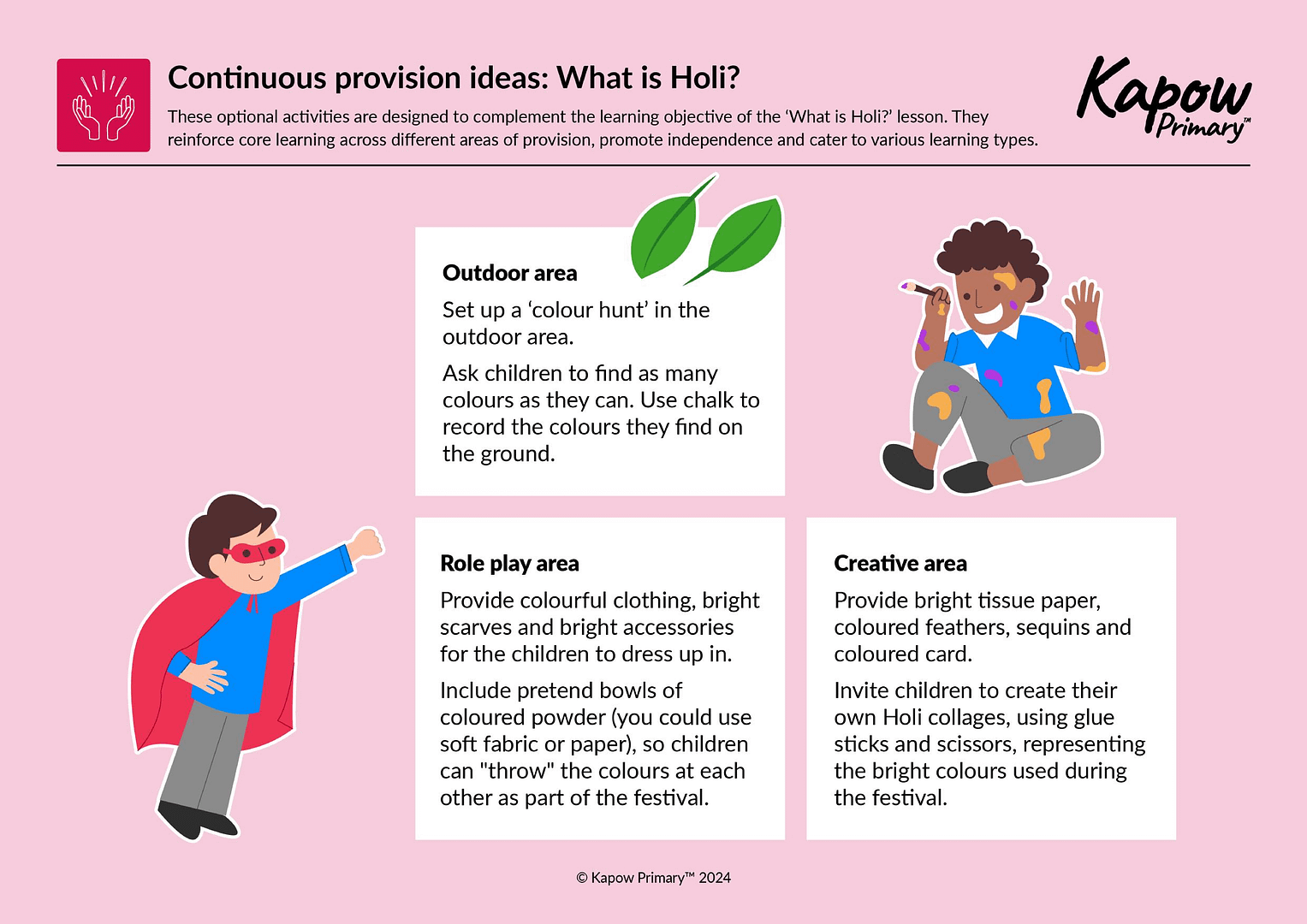
Continuous provision ideas – R&W EYFS: What is Holi?
Continuous provision activities to complement the EYFS lesson 'What is Holi?'
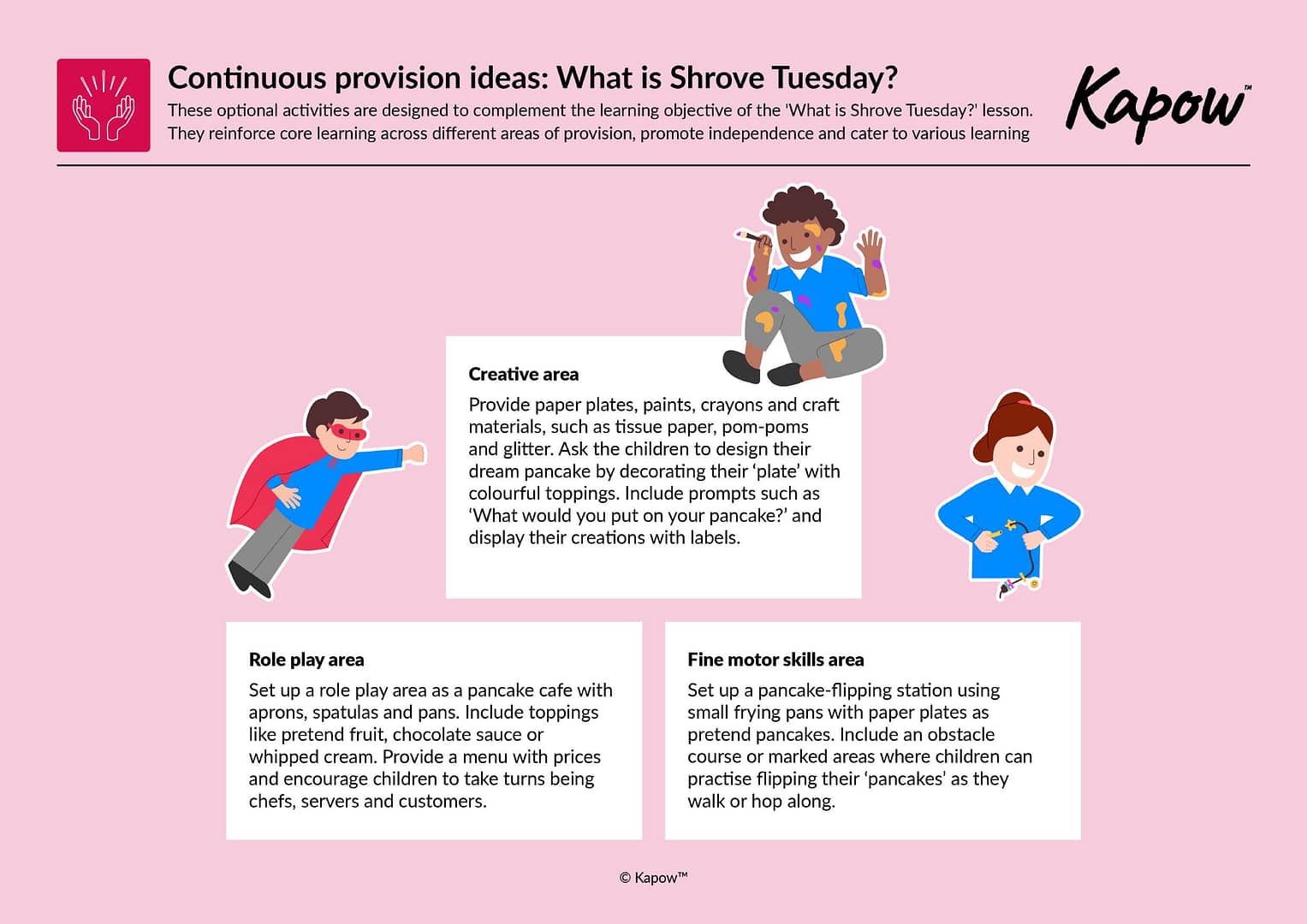
Continuous provision ideas – R&W EYFS: What is Shrove Tuesday?
Continuous provision activities to complement the EYFS lesson 'What is Shrove Tuesday?'
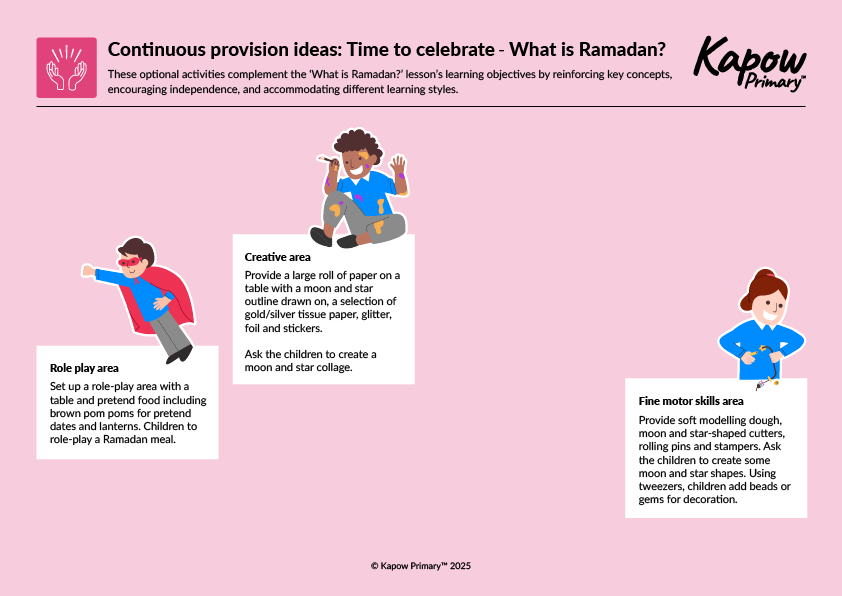
Continuous provision ideas – R&W EYFS: What is Ramadan?
Continuous provision activities to complement the EYFS lesson 'What is Ramadan?'.
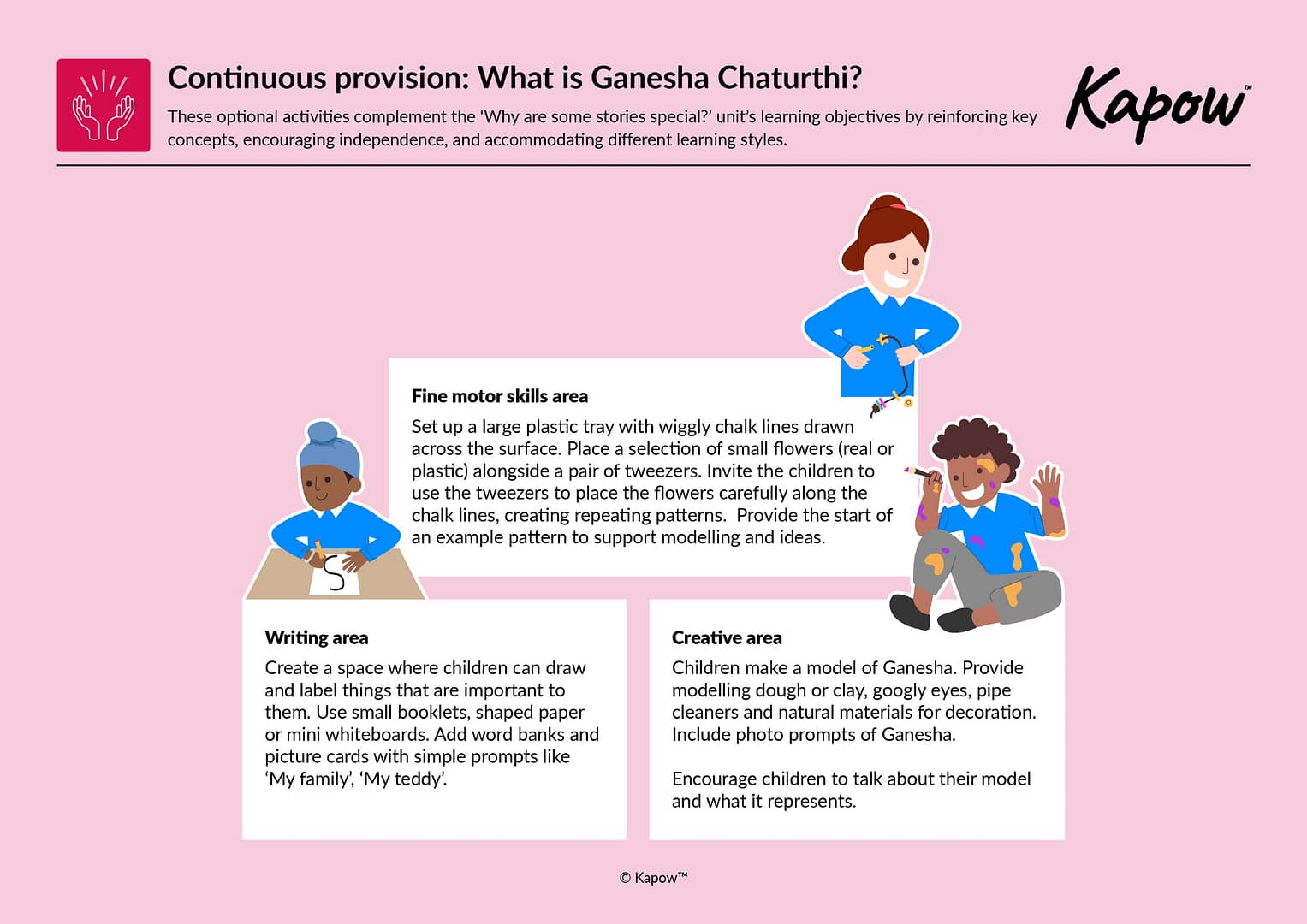
Continuous provision ideas – R&W EYFS: What is Ganesha Chaturthi?
Continuous provision activities to complement the EYFS lesson 'What is Ganesha Chaturthi'?
